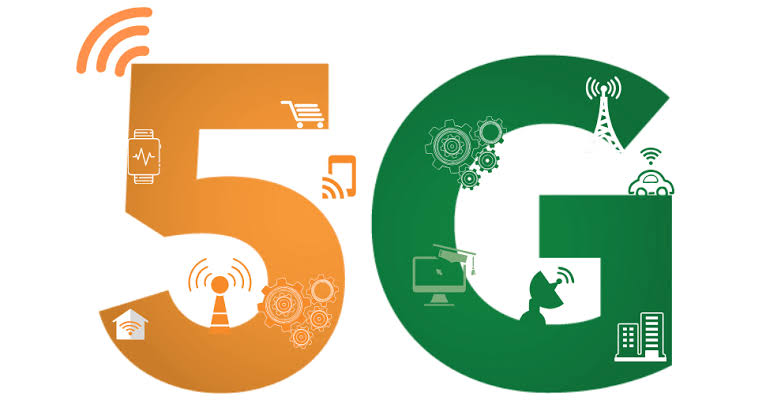The rise of remote work has reshaped how businesses operate, with technology serving as the backbone of productivity. By 2025, the introduction and widespread adoption of 5G technology has taken remote work to new heights, enabling faster communication, smoother collaboration, and seamless access to digital resources. 5G, the fifth generation of wireless connectivity, offers ultra-fast speeds, low latency, and higher network reliability, which directly enhance the efficiency and experience of working from anywhere.
For businesses and employees, the impact of 5G extends beyond just speed. It enables new tools, platforms, and opportunities that were previously limited by connectivity challenges. As remote work continues to grow globally, 5G is emerging as a critical driver of productivity and innovation.
Faster and More Reliable Internet Speeds
One of the most significant benefits of 5G technology is its ability to deliver speeds up to 100 times faster than 4G. This level of connectivity allows remote workers to download and upload large files in seconds, participate in high-definition video conferences without buffering, and access cloud-based applications instantly.
With reliable, high-speed internet, employees no longer face the frustrations of lagging connections, which often disrupt workflow and reduce efficiency. Businesses benefit from smooth operations, especially when collaborating across different locations or time zones.
Low Latency for Real-Time Collaboration
Latency—the delay between sending and receiving data—has been a major issue with older networks. 5G reduces latency to as low as one millisecond, enabling real-time interactions and communications.
This improvement is particularly valuable for remote teams working on collaborative tasks, such as live document editing, design reviews, or virtual brainstorming sessions. Tools like virtual whiteboards, remote desktops, and cloud-based platforms function far more effectively with near-instant data transmission.
Enhanced Video Conferencing and Virtual Meetings
Video conferencing platforms have become essential for remote work, but poor connectivity often results in interruptions and low-quality calls. With 5G, video meetings are smoother, offering crystal-clear audio and high-definition visuals without disruptions.
The improved bandwidth also supports more advanced virtual meeting experiences, including augmented reality (AR) and virtual reality (VR) tools, which are becoming increasingly popular for immersive collaboration and training sessions.
Empowering Cloud-Based Applications
Cloud computing is a cornerstone of remote work, enabling employees to access files, software, and data from any location. 5G enhances the performance of cloud-based applications by ensuring faster synchronization and seamless access to shared resources.
Whether it is managing complex projects on platforms like Asana, accessing remote servers, or working with large datasets, 5G ensures that these processes are smooth and efficient, improving overall productivity.
Supporting Emerging Remote Work Technologies
The rise of advanced technologies such as AR, VR, and AI-powered tools is transforming how remote teams operate. 5G provides the bandwidth and low latency needed for these technologies to function optimally.
For instance, remote workers can use VR headsets for immersive virtual offices or training environments without lag, while AI-powered chatbots and assistants respond instantly, streamlining workflows and boosting productivity.
Greater Flexibility and Mobility
With 5G, employees are no longer tied to a single location with stable Wi-Fi. They can work efficiently from virtually anywhere—whether traveling, working in public spaces, or in rural areas that were previously underserved by high-speed internet.
This increased flexibility not only improves work-life balance but also allows companies to tap into a wider talent pool without worrying about connectivity challenges.
Boosting Business Efficiency and Cost Savings
5G reduces downtime caused by slow connections, leading to faster decision-making and improved efficiency. Businesses that adopt 5G-enabled tools and infrastructure can operate more smoothly, reducing operational costs related to communication delays or IT issues.
For industries that rely heavily on remote monitoring, such as logistics or healthcare, 5G also enables more accurate real-time data sharing, reducing the risk of errors and delays.
Future Potential of 5G for Remote Work
Looking ahead, 5G will continue to expand the capabilities of remote work by supporting technologies like smart offices, IoT-powered devices, and holographic meetings. The combination of 5G with AI and cloud computing will create new opportunities for automation and collaboration, further boosting productivity.
As businesses adopt hybrid and fully remote models, 5G will remain a critical enabler of success, ensuring that employees have access to the tools and connectivity they need to perform at their best.
Conclusion
The impact of 5G on remote work productivity is profound, offering faster speeds, lower latency, and greater reliability that redefine how teams collaborate and perform. By 2025, 5G has become a key driver of innovation, enabling new technologies and improving both the efficiency and quality of remote work.
Companies that leverage 5G to enhance their remote work strategies will not only achieve higher productivity but also remain competitive in an increasingly digital and flexible work environment.




5G is revolutionizing remote work by delivering faster speeds, lower latency, and more reliable connectivity, significantly boosting business efficiency and reducing operational costs. Industries like logistics and healthcare benefit from real-time data sharing, while 5G-enabled tools support smoother operations and quicker decision-making.
I’m still on a 4G though